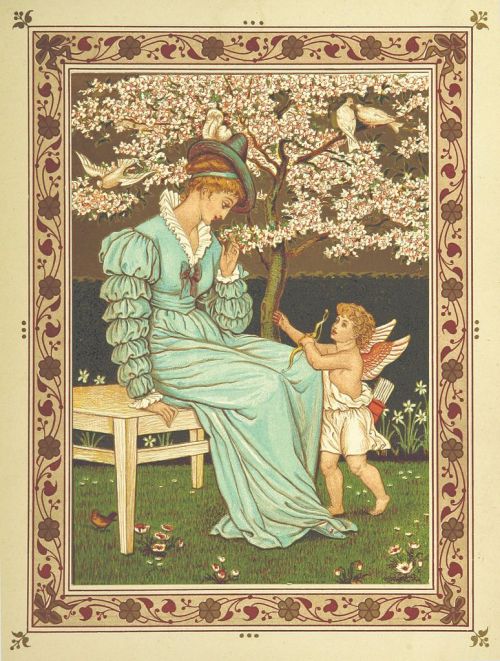Why February 14th is BRILLIANTSpreading the LoveToday is the feast day of Saint Valentine who was on
Why February 14th is BRILLIANTSpreading the LoveToday is the feast day of Saint Valentine who was one of two, possibly three men named Valentine who are said to have been martyred on this day, but most accounts seem to agree that he was a bishop. He may have died in north Africa. He may have been martyred in Rome for marrying Christian couples. Or perhaps he was a bishop in Umbria who restored the sight of a blind girl and was later arrested and beheaded. These are just the ones who are associated with February 14th. There are at least eleven others. So we don’t really know who he was. Nor do we know how he became to be associated with love. He is also patron saint of epileptics, plague (presumably he’s against it) and bee keepers.The first written record we have of Valentine being associated with love is in a poem by Chaucer from around 1375. In it, he suggests that February 14th is the day that birds choose their mates (and humans too). He seems to be talking about an already established tradition, but his poem was written in celebration the first anniversary of the King’s engagement to Anne of Bohemia, so perhaps it’s just something he made up.As we mentioned yesterday, Alban Butler, is his ‘Lives of the Saints’ was of the opinion that Valentine’s Day was a Christian replacement for the Roman festival of Lupercalia. He told us that Roman women used to put their names into a lottery to be drawn by the men. There is no historical evidence for this, but we know that in seventeenth century England, they did something similar. But there were two draws, one where women drew out men’s names and one where men drew out women’s names. So everyone had two Valentines. We also know that married people were not exempt from the draw. In 1667, Samuel Pepys tells us about someone called Will Mercer being his wife’s Valentine, that she had drawn his own name and that he in turn had been drawn as Valentine of 'Mrs Pierce’s little girl’. As someone’s Valentine, you might draw a picture for them, compose a little verse or give a gift. So it wasn’t necessarily anything to do with romance. It was just a bit of a game where everyone got a present.By the eighteenth century, people had started to believe that the first unattached person they saw on Valentine’s day was destined to be their wife or husband. So, someone who was expecting a visit from their favoured person might stay in bed and hide under the blankets until they arrived, just to make sure. We also came across a couple of things you might do to make sure you dreamed of your future spouse. You could pin five bay leaves to your pillow, one at each corner and one in the middle. Or you could boil an egg, take out the yolk, fill it with salt and then eat it whole, shell and all. After that you mustn’t speak to anyone or drink anything before bed.Towards the end of the century, a sort of early Valentine card began to be produced by printers. They were known as 'mechanical valentines’. Things rather snowballed from there, with mass produced cards overtaking hand written notes in the nineteenth century. The one pictured above is from a collection printed in 1876. You can see a couple of Chaucer’s love birds in the top right hand corner. The baby with the arrows is, of course, Cupid. Cupid is the Roman god of desire and erotic love and he didn’t always look like this. The wings and arrows are de rigour but he used to be a lot older. He has two sorts of arrows, those made of gold which make a person fall in love and those tipped with lead which make you want to run away. He had a lot of fun deploying both in the same situation. He generally features as a minor character in Roman myths, but the story of Cupid and Psyche is worth a mention. Psyche was a human princess who was so beautiful that the goddess Venus was jealous of her. She deployed Cupid to generally ruin her life, but Cupid accidentally scratched himself with an arrow and fell in love with her. He took her to his palace but only visited her in the night. She wasn’t allowed to look at him, which led her to believe he was a hideous monster. The story is from 'The Golden Ass’ the only complete novel in Latin that we have. It probably dates from the second century. In the tale of Cupid and Psyche, you can see the roots of both Cinderella and Beauty and the Beast. There are also quests involving a talking tower, a journey to the underworld and a kindly ant. All are undertaken by Psyche, and all whilst she is pregnant with Cupid’s child. So, something for everyone.We also have a bonus fact for you. Today is the anniversary of the 'Pale Blue Dot’ photograph being taken. It is a photograph of the Earth that was taken from 3.7 billion miles away by the Voyager 1 space probe in 1990. We could tell you about it, but we couldn’t put it more eloquently than Carl Sagan does here. Happy Pale Blue Dot Day. -- source link
Tumblr Blog : whytodayisbrilliant.tumblr.com
#february 14th#whytodayisbrilliant#valentines day#carl sagan


